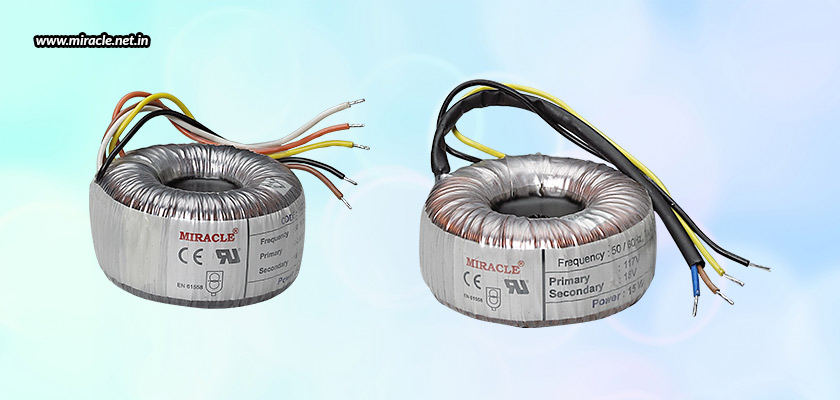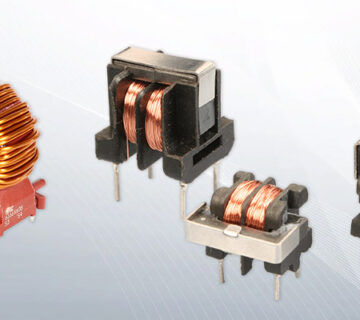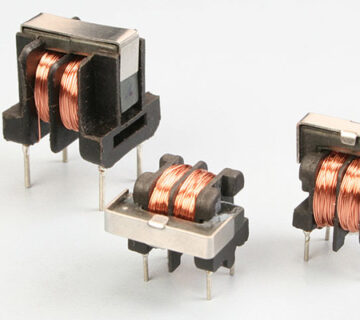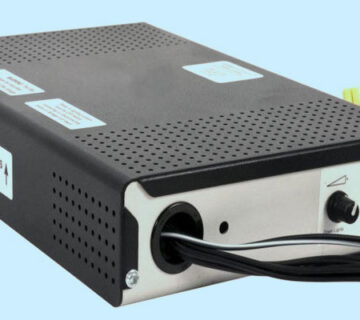Inductor coils, comprising of wire coils wound around a magnetic core to maximize inductance, store energy in a magnetic field when current passes through them. These coils are used extensively in a variety of industries and applications, such as to store energy and reduce voltage ripples in power supplies, blocking certain frequencies while allowing others to pass in filters, and other electronic systems like transformers and motor control circuits.
Why are inductor coils used?
The three essential properties of inductor coils – inductance, resistance, and quality factor – are what make them so useful.
- Inductance is the coil’s capacity to store energy in a magnetic field while current passes through.
- Resistance is the obstruction to the flow of current within the coil, which results in power loss.
- Q factor is the efficiency of the coil, which is determined by the ratio of inductive reactance to the resistance. A higher Q factor indicates improved inductor coil performance, wider bandwidth, and decreased losses.
Which inductor coil to use?
There are several varieties of inductor coils, each ideal for a particular use. These include multilayer chip inductors, toroidal inductors, air-core inductors, iron-core inductors, and more. The frequency range, power needs, size restrictions, and cost considerations are only a few examples of the variables that affect the choice of inductor type.
- Air core inductors comprise of a coil twisted around a plastic or ceramic non-magnetic core. They are useful for applications needing little magnetic interference and have high inductance values, low resistance, and these characteristics.
- Iron-core inductors increase the inductance by using a ferromagnetic core, such as iron or ferrite. Due to their capacity to handle greater currents, they offer higher inductance values than air-core inductors and are frequently employed in power supply applications.
- Toroidal inductors comprise of a coil twisted around a toroidal-shaped core, that is commonly made of ferrite or powdered iron. They have a large inductance value, little EM interference, and a small dimension. Power electronics, telecommunications, and audio systems all often use such toroidal inductors.
- Multilayer chip inductors are compact, surface-mounted inductors that are made up of dielectric layers in between many layers of conductive material. They are used in miniature electrical devices, such as in portable electronics like laptops and mobile devices.
- UU inductors have a UU-shaped core, and are known for their high inductance values and minimal magnetic interference properties. These inductors are employed in power supplies and transformers, and in applications requiring effective power conversion.
- EE inductors have an EE-shaped core, and are also known for their high inductance values and minimal magnetic interference. These inductors provide good magnetic flux coupling, and are ideal for usage in power supplies and electrical circuits.
- EI inductors have an EI-shaped core, known for their efficient magnetic coupling, thus being effectively used in transformer and inductors for power electronics, and in applications requiring high power handling and minimal losses.
- Pot core inductors are cylindrical in shape, having a central core enclosed in a pot-like construction. They are useful for uses like power supply, filters, and amplifiers, thanks to their high inductance values and less EM interference.
These illustrations depict a selection of the several kinds of inductor coils that are offered on the market. Each type has its own unique benefits, and the best one is chosen depending on the amount of power needed, the frequency range, the available space, and the desired performance qualities.
How to select an appropriate inductor coil?
To achieve optimum performance and compliance with the particular application, choosing the appropriate inductor coil requires taking into account a number of criteria. Here are some essential steps to help you choose the right inductor coil.
- Inductance requirements: Based on the required voltage, current, and frequency for the application, determine the desired inductance value. This will aid in establishing the range of inductance values to take into account.
- Frequency considerations: It is crucial to choose an inductor coil that functions efficiently within the appropriate frequency range, as different inductor coils exhibit different frequency responses.
- Temperature stability: Consider the application’s operational temperature range while evaluating temperature stability. Make sure the inductor coil you choose can survive the expected temperature changes without seeing a substantial change in performance.
- Current rating considerations: Calculate the inductor coil’s maximum allowable current flow. Make sure the coil you choose can take the predicted current without saturation or excessive power dissipation.
- Environmental considerations: Consider the environment in which the inductor coil will function. The choice of a coil that can tolerate a certain environment may be impacted by elements including humidity, vibration, and exposure to chemicals or dust.
- Size considerations: Consider the application’s size limitations and the space that is available. Consider the inductor coil’s physical dimensions and select a size that satisfies performance requirements while fitting inside the available space.
You can select the ideal inductor coil that offers the best performance, dependability, and compatibility with your particular application by carefully evaluating these variables and speaking with a reliable manufacturer. One such reputed and trustworthy inductor coil manufacturer in India is Miracle Electronics, where you can get RoHS compliant, High and REACH compliant inductors that boast of a safe design and are low profile. You can also have your inductors specially tailored to your specific requirements here.




